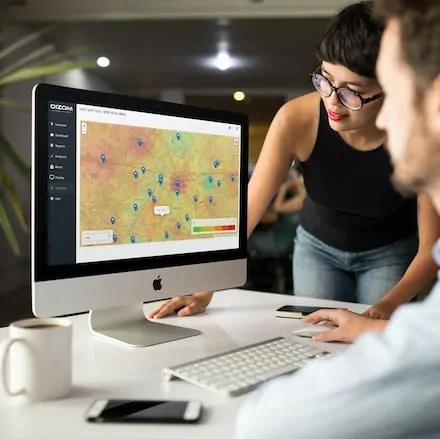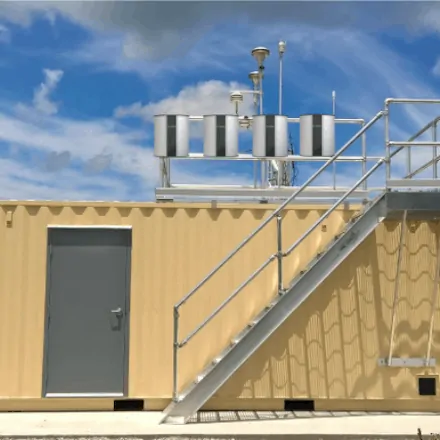Different Stages for Calibration of Air-Quality Monitoring System

Different Stages for Calibration of Air-Quality Monitoring System
Written By: Ayyan Karmakar & Vrushank Vyas
Published On September, 2020
Download Whitepaper
Sensor-based air quality monitoring systems offer a powerful and affordable way to monitor or track pollution in real-time. Their cost-effectiveness, portability, and data accuracy make them ideal for hyperlocal air quality monitoring. Such a network of densely placed monitors produces unprecedented details of air pollution exposure at the human breathing level. However, their true power lies in the accuracy of their measurements, which is ensured through regular calibration.
Calibration is a crucial process that checks and corrects a monitor’s performance, ensuring reliable data. It compensates for errors that can creep in during manufacturing, assembly, or even while the monitor is in use. This process plays a vital role in maintaining the accuracy of the sensor’s response over time, thereby ensuring the reliability of the data.
This white paper serves as a comprehensive guide to understanding the various stages of calibration of air quality monitoring systems. It explains each calibration stage and its importance and provides insights into factors affecting system calibration and how to consider them. Moreover, it guides the reader on when and how calibration is required and how to develop an effective routine calibration plan. By following the guidelines presented in this paper, environmental scientists, policymakers, and air quality monitoring system manufacturers can ensure highly accurate data is measured by these systems in all environmental conditions. Here are some of the important topics we covered in this whitepaper:
The significance of calibration in maintaining data collection accuracy by sensor-based air quality monitoring systems (CAAQMS). It details the various stages of this process, categorized into pre-deployment and post-deployment calibration.
Pre-deployment calibration ensures the proper functioning of individual sensors and the entire monitoring system before it’s deployed in the field. This includes calibrating each sensor at the manufacturing facility, testing the assembled system’s performance in a controlled environment, and exposing the system to known concentrations of reference gas in a standardized laboratory.
Following deployment, calibration helps rectify any discrepancies arising from real-world conditions. Collocation calibration achieves this by placing the sensor-based device near a reference station that measures the same ambient air quality. The data from both systems are then compared to create a calibration curve, essentially a correction factor for the sensor-based device.
An alternative to collocation calibration is spot calibration, a more resource-efficient method. A master device, previously subjected to rigorous calibration procedures, is used as a reference point. The master device and the device being calibrated are placed in close proximity, and their readings are compared to identify and address any deviations.
The paper also highlights the advantages of OIZOM’s air quality monitoring devices, which undergo all the calibration stages mentioned earlier. Additionally, OIZOM’s e-breathing technology facilitates on-site calibration, eliminating the need for frequent redeployment.
The paper emphasizes that OIZOM’s devices are active sampling-based, meaning the sensors are housed within the main body of the device, minimizing the need for cleaning and calibration compared to passive sampling devices.




